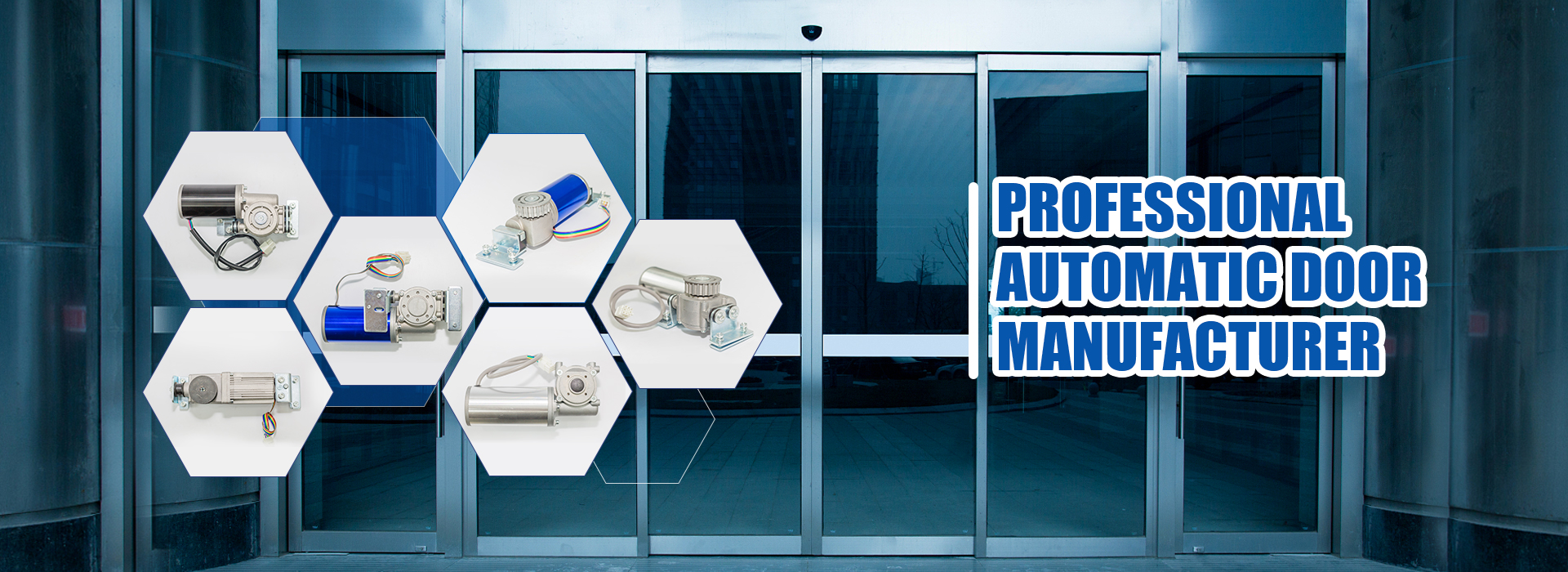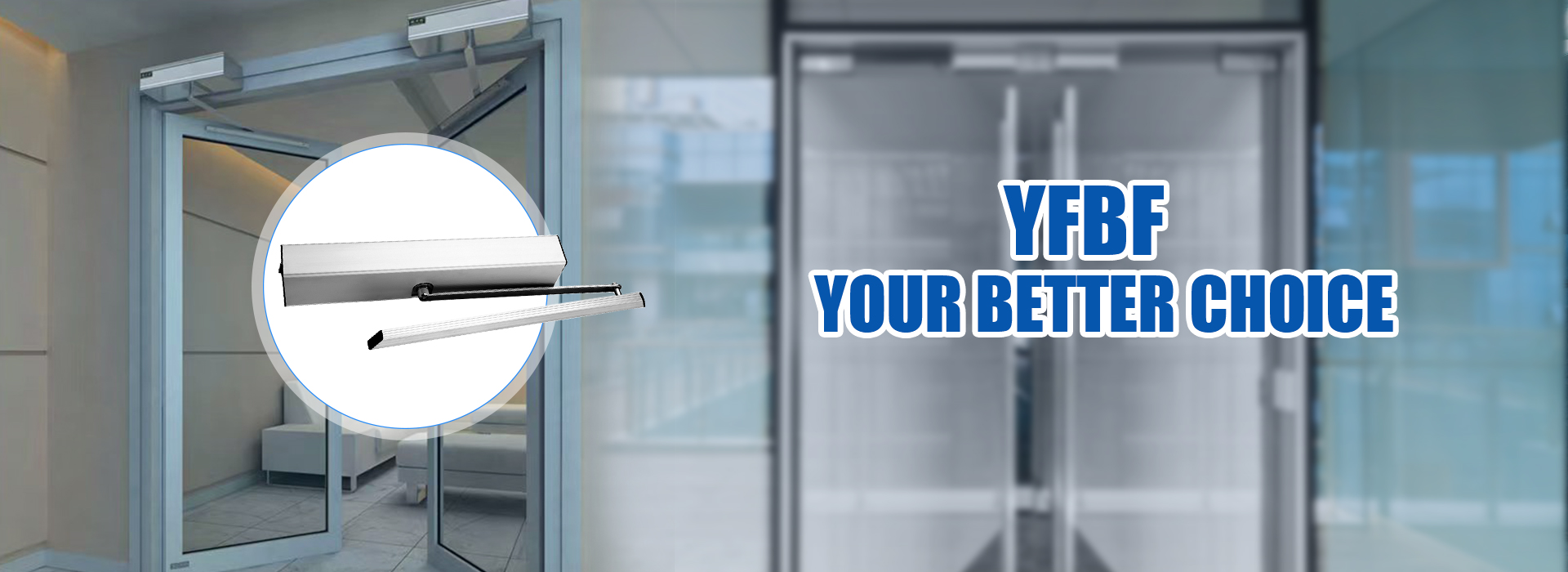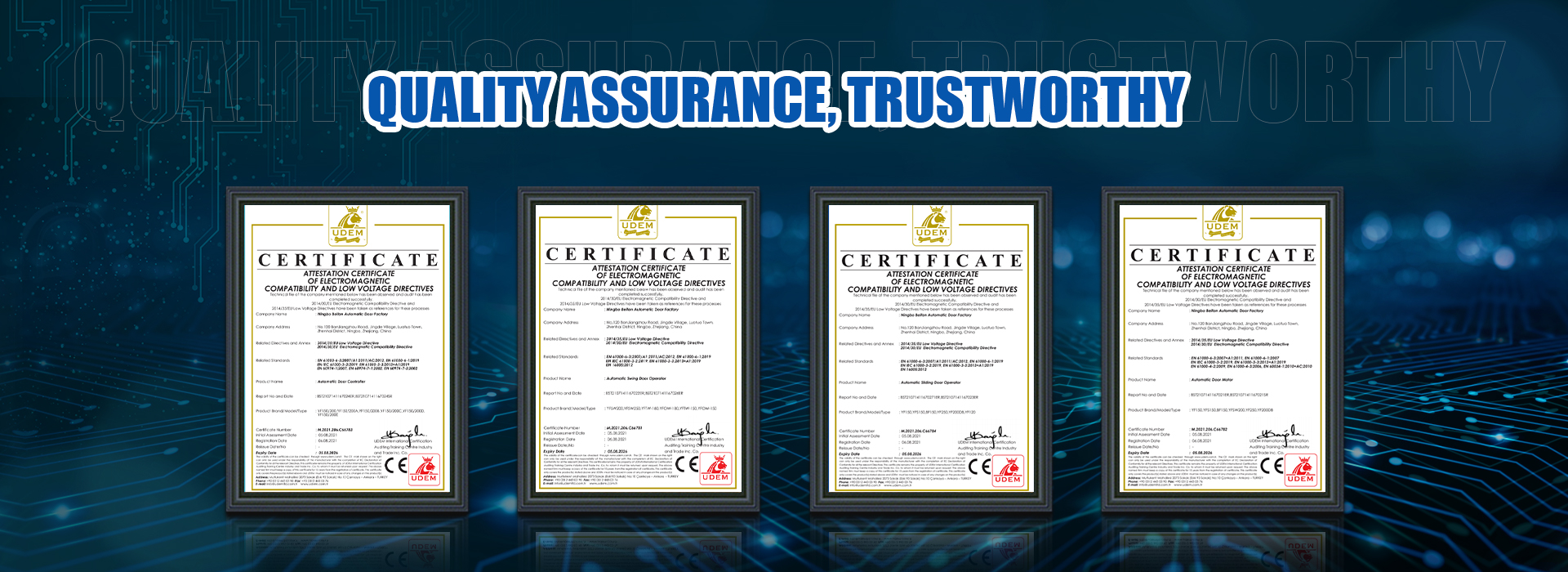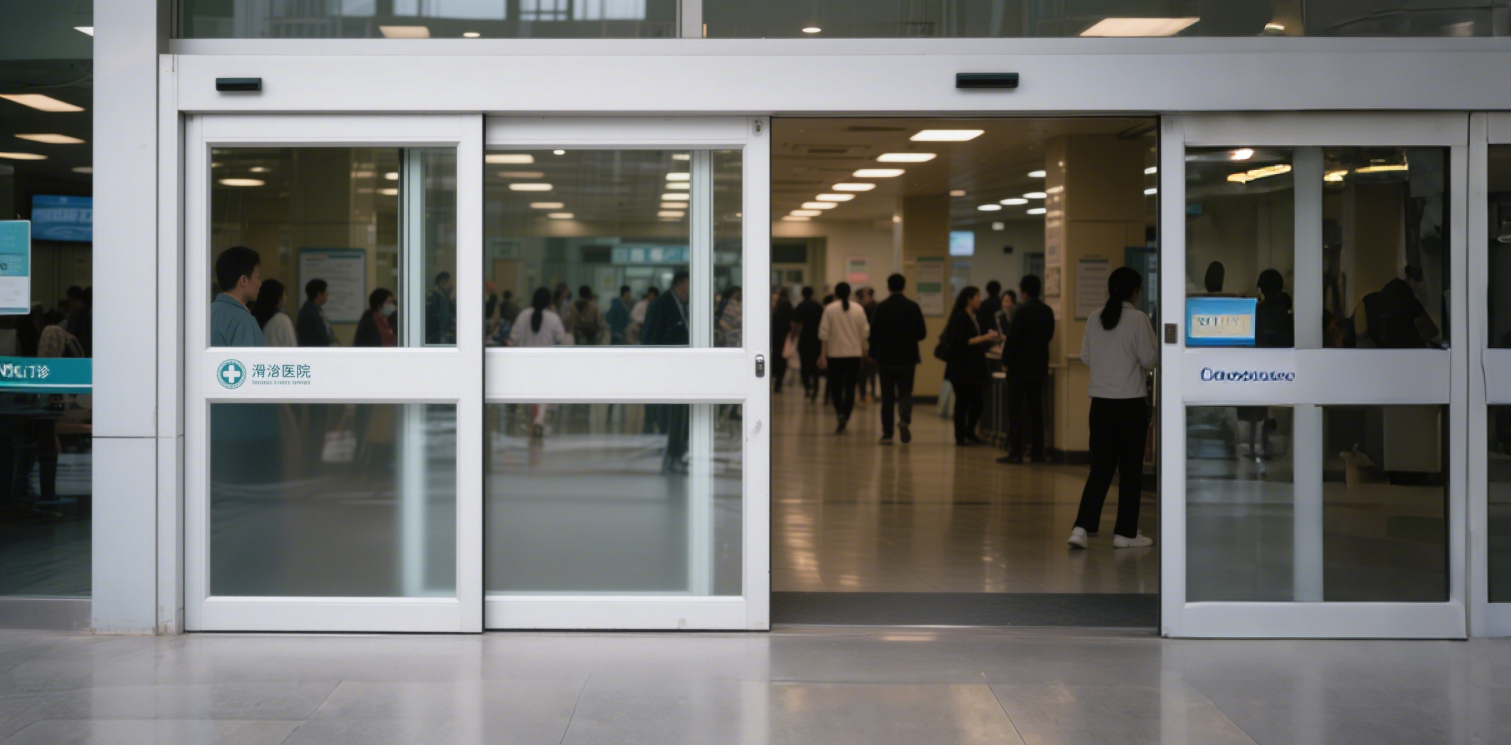
Accessibility and efficiency have become essential in modern spaces. Whether it’s a bustling office, a retail store, or a healthcare facility, people expect convenience and seamless movement. That’s where technology steps in. The Automatic Sliding Door Opener offers a smart solution. It simplifies entryways, making spaces more inclusive and easier to navigate for everyone.
Key Takeaways
- Automatic sliding doors help people by opening without using hands. They create wide spaces, making it easier for those with mobility issues to move around.
- These doors save energy by keeping drafts out and holding indoor temperatures steady. This can lower energy bills by as much as 30%.
- Adding automatic sliding doors is simple. They can fit into current spaces without big changes, making them a smart choice for any place.
What Are Advanced Sliding Door Operators?
Definition and Overview
Advanced sliding door operators are motorized systems designed to automate the movement of sliding doors. These systems use mechanisms like belts, gears, or chain drives to glide doors along a track effortlessly. A central control unit manages the entire operation, receiving signals from sensors and adjusting the door’s speed and timing. This ensures smooth and efficient functionality.
Safety is a top priority in these systems. Equipped with advanced sensors, they detect obstacles in the door’s path, preventing accidents. This feature not only protects users but also ensures compliance with safety standards. Additionally, these doors operate autonomously, responding to motion or activation devices like push buttons or key fobs. This makes them ideal for high-traffic areas, offering seamless access and convenience.
Key Features and Technologies
Modern sliding door operators come packed with innovative features that enhance their usability and efficiency. Here are some standout characteristics:
- Keyless Access: Users can unlock doors with a fingerprint, code, or smartphone app, eliminating the need for traditional keys.
- Remote Control: Doors can be locked or unlocked from anywhere, adding a layer of convenience and security.
- Durable Design: Built to withstand daily use, these systems maintain their functionality and aesthetic appeal over time.
Technological advancements have also introduced cutting-edge sensors and algorithms. For example:
- Radar, Laser, and Vision-Based Sensors: These improve accuracy and reliability by detecting movement with precision.
- Energy Optimization: Advanced algorithms adjust door operation based on traffic patterns, conserving energy.
- Biometric Access Control: This feature uses unique biological traits, like fingerprints, for enhanced security.
| Feature | Description |
|---|---|
| Acoustic Isolation | Reduces noise transmission, creating quieter environments. |
| Space-Saving Design | Maximizes space, perfect for modern layouts. |
| Hands-Free Access | Promotes accessibility for all users. |
| Safety Compliance | Meets ANSI/BHMA A156.38 standards for safe operation. |
| Low Noise Operation | Ensures quiet functionality, ideal for peaceful settings. |
| Flexible Design Options | Offers customizable configurations to suit various architectural needs. |
These features and technologies make advanced sliding door operators a valuable addition to any space, blending functionality with modern design.
Enhancing Accessibility with Automatic Sliding Door Opener
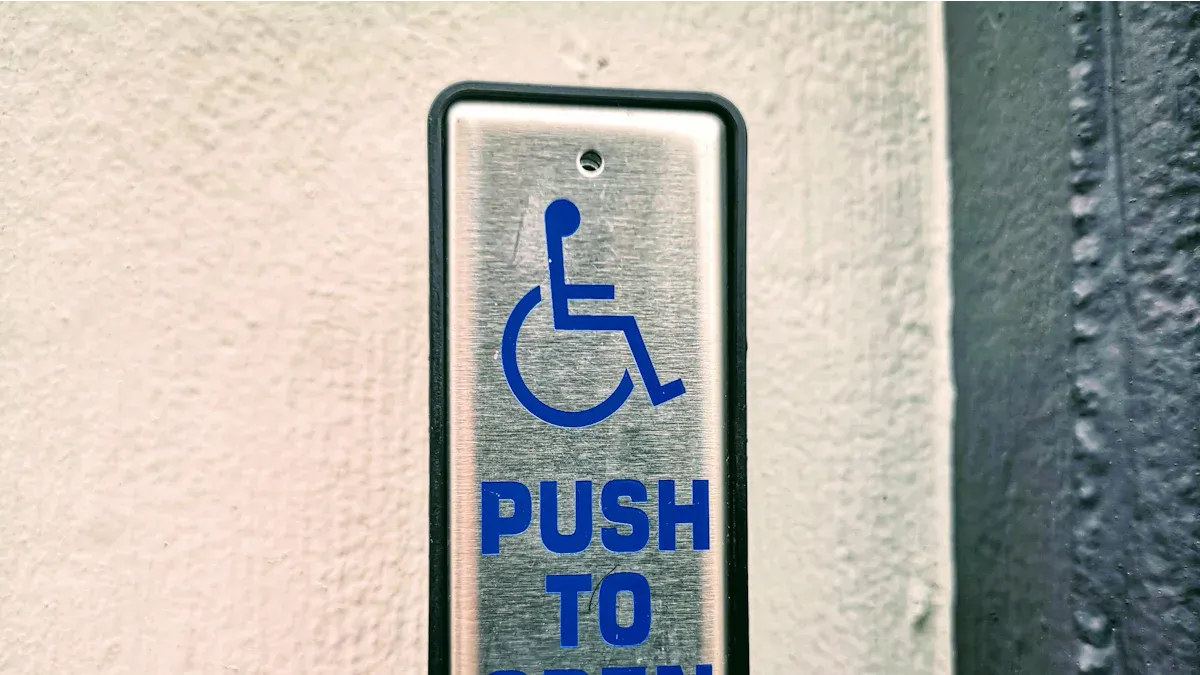
User-Friendly Design
Automatic sliding door openers are designed with simplicity and ease of use in mind. Their hands-free operation ensures that users can enter and exit spaces without physical effort. Motion sensors or pressure pads activate these doors, making them intuitive for everyone, including children and older adults. For those who prefer manual activation, low-energy power-operated doors can be triggered by a button or panel. These options cater to diverse user preferences, ensuring accessibility for all.
Another key advantage is the elimination of traditional door swing paths. Sliding doors optimize space by preserving up to 30 square feet of usable room. This feature is especially beneficial in compact areas like hallways or small offices. By combining functionality with thoughtful design, these systems create a seamless experience for users.
Tip: Installing automatic sliding doors in high-traffic areas like restrooms or classrooms can also enhance hygiene by reducing hand-surface contact.
Accessibility Standards Compliance
Modern sliding door systems comply with strict accessibility standards, such as the Americans with Disabilities Act (ADA). These standards ensure that individuals with varying mobility levels can navigate spaces independently. Features like low thresholds, wide openings, and smooth operation meet the requirements for wheelchair users and those with assistive devices.
According to Technavio, the demand for touchless solutions like automatic sliding doors is expected to grow by $1.17 billion in the next three years. This growth reflects a global shift toward more inclusive and accessible environments. By adopting these systems, businesses and institutions demonstrate their commitment to creating spaces that welcome everyone.
Benefits for Individuals with Mobility Challenges
Automatic sliding door openers significantly improve the quality of life for individuals with mobility challenges. These systems provide seamless entry and exit, reducing the physical effort required to open heavy doors. For example, power-assist doors minimize the force needed to operate large doors, making them ideal for hospitals, senior living facilities, and public buildings.
A case study at St. Mary’s Hospital highlights the impact of these doors on hygiene and safety. The installation of touchless automatic doors led to a 40% reduction in contact-based infections. Additionally, improved access reduced the risk of accidents, enhancing patient safety. These benefits extend beyond healthcare settings, offering similar advantages in schools, offices, and retail spaces.
| Benefit | Description |
|---|---|
| Accessibility | Automatic sliding doors provide seamless entry and exit, enhancing accessibility for individuals with mobility limitations. |
| Hygiene | Installation of touchless automatic doors at St. Mary’s Hospital led to a 40% reduction in contact-based infections. |
| Patient Safety | Improved access reduces the risk of accidents and enhances overall patient safety in healthcare settings. |
By addressing the unique needs of individuals with mobility challenges, automatic sliding door openers promote independence and dignity. They transform spaces into inclusive environments where everyone feels welcome.
Improving Efficiency in High-Traffic Areas
Optimizing Traffic Flow
In busy spaces like airports, shopping malls, or hospitals, managing the flow of people is crucial. Automatic sliding door openers excel in these environments by allowing smooth and uninterrupted movement. Unlike traditional doors, which can create bottlenecks, these systems open and close quickly, adapting to the pace of foot traffic. This ensures that people can move freely without delays.
Different door configurations also play a role in traffic management. For instance:
| Door Type | Throughput Description |
|---|---|
| Single Automatic Sliding | High throughput, allowing users to flow through freely. |
| Draught Lobby with Two | Decreased passage capacity compared to a single door, affecting efficiency in busy areas. |
By choosing the right type of automatic sliding door, businesses can optimize traffic flow and create a more efficient environment for everyone.
Note: With an aging population and increased demand for accessible infrastructure, these doors also make it easier for elderly individuals and those with disabilities to navigate high-traffic areas.
Energy Efficiency
Automatic sliding door openers are not just about convenience—they’re also energy savers. Traditional doors often let in drafts or fail to close properly, leading to energy loss. In contrast, automatic sliding doors use advanced sealing technologies to minimize this issue. They open only when needed and close promptly, helping maintain indoor temperatures in climate-controlled spaces.
Here are some key energy-saving benefits:
- They can reduce energy costs by up to 30% compared to traditional door systems.
- Advanced sealing prevents heat or air conditioning from escaping, making them ideal for busy locations like hotels or office buildings.
By conserving energy, these doors not only lower utility bills but also contribute to a greener, more sustainable future.
Operational Reliability
Reliability is essential in high-traffic areas where doors are used constantly. Automatic sliding door openers are built to handle heavy usage without compromising performance. Their durable components and advanced mechanisms ensure smooth operation, even during peak hours.
These systems also come with features like self-diagnostics and remote monitoring. This means maintenance teams can quickly identify and address issues, reducing downtime. For businesses, this translates to fewer disruptions and a better experience for customers and employees alike.
Tip: Regular maintenance can further enhance the lifespan and reliability of these doors, ensuring they remain efficient for years to come.
By combining optimized traffic flow, energy efficiency, and operational reliability, automatic sliding door openers prove to be an invaluable asset in high-traffic areas.
Installation and Integration
Simple Setup and Retrofitting
Installing automatic sliding door systems is simpler than many might think. These systems are designed to fit seamlessly into both new and existing spaces. Retrofitting, in particular, offers a practical solution for upgrading traditional doors without major structural changes. For example:
- Sliding doors eliminate the need for large swing arcs, making them ideal for tight spaces.
- They meet Grade 1 standards, ensuring durability and easy maintenance, even in high-traffic areas like hospitals.
- Using products from a single manufacturer simplifies installation and future upkeep, as facility managers have one point of contact for support.
This streamlined approach saves time and reduces complexity, making it easier for businesses to adopt these systems.
Compatibility with Existing Systems
Modern sliding door operators are built with compatibility in mind. They integrate effortlessly with existing building systems, such as security setups, HVAC controls, and access management tools. This ensures that businesses don’t need to overhaul their infrastructure to enjoy the benefits of automation. Additionally, these doors can be customized to match the aesthetic and functional needs of any space, from sleek office buildings to cozy retail stores.
Tip: When retrofitting, consider doors with energy-saving modes to enhance efficiency during off-peak hours.
Integration Considerations
When integrating automatic sliding doors, it’s important to evaluate several factors. Security features, for instance, are critical in high-security areas like airports or data centers. IoT connectivity is another key consideration, enabling remote monitoring and control for added convenience. Customization options allow businesses to tailor doors to their specific needs, whether it’s for accessibility, energy efficiency, or design.
Maintenance requirements should also be assessed. Regular upkeep ensures long-term reliability and minimizes downtime. Balancing cost with advanced features is equally important, helping businesses maximize their investment while meeting operational goals.
By addressing these considerations, businesses can ensure a smooth integration process and enjoy the full benefits of modern sliding door systems.
Automatic Sliding Door Openers make spaces more accessible and efficient. They simplify movement for everyone, from individuals with mobility challenges to those navigating high-traffic areas. These systems also create inclusive environments by meeting accessibility standards and optimizing energy use. Businesses and homeowners should explore these solutions to enhance convenience and sustainability in their spaces.
FAQ
1. How do automatic sliding doors improve accessibility?
They offer hands-free operation, wide openings, and low thresholds. These features make spaces easier to navigate for individuals with mobility challenges.
2. Are automatic sliding doors energy-efficient?
Yes, they minimize drafts and use advanced sealing technologies. This helps maintain indoor temperatures and reduces energy costs by up to 30%.
3. Can automatic sliding doors be retrofitted into existing spaces?
Absolutely! Retrofitting is simple and doesn’t require major structural changes. They integrate seamlessly into existing systems and layouts.
Post time: Apr-24-2025

